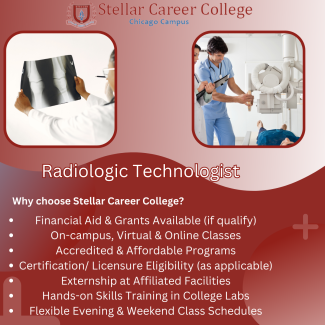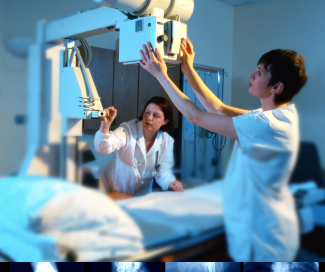Radiologic Technologist (x-ray tech) | Stellar College

Radiologic Technologist (X-ray tech)| Stellar College
Discover the exciting world of radiologic technology and embark on a rewarding career path as a radiologic technologist. This article provides valuable insights into the role, responsibilities, and opportunities available in this field. Get ready to explore the comprehensive guide to becoming a successful radiologic technologist.
If you’re fascinated by the intersection of technology, healthcare, and patient care, a career as a radiologic technologist might be the perfect fit for you. Radiologic technologists play a crucial role in the medical field by operating specialized imaging equipment to help diagnose and treat various medical conditions. They work closely with physicians and radiologists to capture high-quality images that aid in accurate diagnoses. Moreover, they provide compassionate care to patients and ensure their safety during procedures.
If you’re considering a career as a radiologic technologist, this article will serve as your comprehensive guide. We’ll delve into the educational requirements, necessary skills, job outlook, and potential career paths in the field. So, let’s embark on this journey to discover the ins and outs of becoming a radiologic technologist.
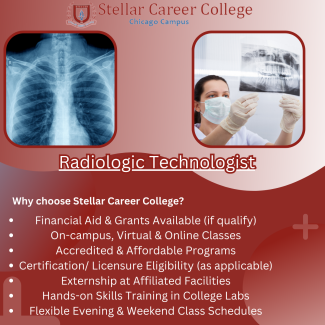
Educational Requirements
Specializations in Radiologic Technology
Required Skills and Competencies
Job Outlook and Growth Potential
Work Environment and Settings
Professional Certifications and Licensure
Continuing Education and Advancement Opportunities
Salary and Compensation
Challenges and Rewards in the Field
Tips for Success as a Radiologic Technologist
Table of Contents:
Table of Contents
Educational Requirements
Specializations in Radiologic Technology
Required Skills and Competencies
Job Outlook and Growth Potential
Work Environment and Settings
Professional Certifications and Licensure
Continuing Education and Advancement Opportunities
Salary and Compensation
Challenges and Rewards in the Field
Tips for Success as a Radiologic Technologist
Educational Requirements:
Becoming a radiologic technologist typically requires obtaining an associate’s degree in radiologic technology from an accredited program. These programs typically span two years and combine classroom instruction with hands-on clinical training. Coursework covers anatomy, patient care, radiation safety, imaging techniques, and medical ethics. Upon completing the program, graduates are eligible to pursue licensure and certification in their respective state.
Specializations in Radiologic Technology:
Radiologic technology offers various specialization options for professionals to explore. Some common areas of specialization include diagnostic radiography, computed tomography (CT), magnetic resonance imaging (MRI), mammography, and radiation therapy. Each specialization requires additional training and certification beyond the foundational radiologic technology education.
Required Skills and Competencies:
To excel as a radiologic technologist, certain skills and competencies are essential. These include a strong grasp of anatomy and medical terminology, proficiency in operating imaging equipment, attention to detail, excellent communication skills, and the ability to prioritize patient care and safety. Additionally, problem-solving abilities, adaptability, and a commitment to ongoing learning are highly valuable in this field.
Job Outlook and Growth Potential:
The demand for skilled radiologic technologists continues to grow steadily. Advancements in medical technology and an aging population contribute to the increased need for diagnostic imaging procedures. The Bureau of Labor Statistics projects a 9% employment growth for radiologic technologists from 2020 to 2030, resulting in numerous job opportunities across various healthcare settings.
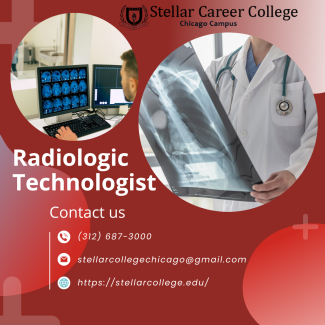
Work Environment and Settings:
Radiologic technologists work in diverse healthcare settings, including hospitals, diagnostic imaging centers, outpatient clinics, and physician offices. They may also find employment in specialized facilities such as orthopedic clinics, cancer treatment centers, or urgent care centers. The work environment typically involves interacting with patients of all ages and collaborating with a multidisciplinary healthcare team.
Professional Certifications and Licensure:
Obtaining professional certification and licensure is a crucial step for radiologic technologists to demonstrate their competence and commitment to the field. The American Registry of Radiologic Technologists (ARRT) offers certification in various specializations. Additionally, state licensure requirements vary, so it’s essential to research and fulfill the specific criteria for the state in which you intend to practice.
Continuing Education and Advancement Opportunities:
Radiologic technologists are encouraged to pursue continuing education to stay updated with advancements in technology, imaging techniques, and patient care practices. Continuing education not only enhances professional growth but also opens doors to advancement opportunities. Technologists can specialize in advanced imaging modalities, become educators or supervisors, or even pursue careers in healthcare administration or research.
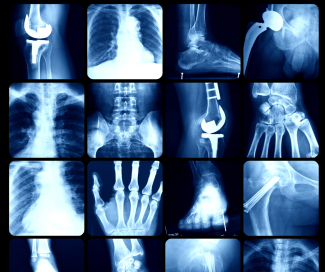
Salary and Compensation:
Radiologic technologists enjoy competitive salaries and compensation packages. According to the Bureau of Labor Statistics, the median annual wage for radiologic technologists was $63,120 as of May 2020. Salary ranges can vary based on factors such as experience, specialization, geographic location, and the type of healthcare facility.
Challenges and Rewards in the Field:
Like any profession, radiologic technology comes with its own set of challenges and rewards. The work can be physically demanding, requiring technologists to stand for long periods, lift patients, and operate heavy equipment. Additionally, working with patients who may be experiencing pain or anxiety can be emotionally challenging. However, the rewards of helping patients, contributing to accurate diagnoses, and being at the forefront of medical advancements make the field highly fulfilling.
Tips for Success as a Radiologic Technologist:
To excel in this field, aspiring radiologic technologists should consider the following tips:
- Develop a strong foundation in anatomy and medical terminology.
- Seek opportunities for hands-on clinical experience during your education.
- Hone your communication skills to effectively interact with patients and healthcare professionals.
- Stay updated with advancements in imaging technology and healthcare practices.
- Embrace a patient-centric approach and prioritize their comfort and safety.
- Foster a growth mindset and continuously pursue professional development opportunities.
- Network with professionals in the field and join relevant industry associations.
- Practice self-care to manage the physical and emotional demands of the job.
- Maintain a strong work ethic, professionalism, and attention to detail.
- Stay abreast of industry trends and job opportunities through online resources and professional publications.
By following these tips, you can set yourself on a path to success and fulfillment in your career as a radiologic technologist.
FAQs (Frequently Asked Questions):
- What is the role of a radiologic technologist?
- Radiologic technologists operate imaging equipment to produce diagnostic images and assist in patient care during procedures.
- How long does it take to become a radiologic technologist?
- Typically, it takes two years to complete an associate’s degree program in radiologic technology.
- Can I specialize in a specific area of radiologic technology?
- Yes, there are various specializations available, including CT, MRI, mammography, and radiation therapy.
- What are the job prospects for radiologic technologists?
- The job outlook is favorable, with a projected 9% employment growth from 2020 to 2030, creating ample job opportunities.
- How much do radiologic technologists earn
Certainly! Here’s the continuation:
- How much do radiologic technologists earn on average?
- The median annual wage for radiologic technologists was $63,120 as of May 2020, but salaries can vary based on factors such as experience, specialization, and location.
- Is licensure required to work as a radiologic technologist?
- Licensure requirements vary by state, but most states require radiologic technologists to be licensed or certified.
- What are the typical work settings for radiologic technologists?
- Radiologic technologists can work in hospitals, diagnostic imaging centers, outpatient clinics, physician offices, and specialized facilities such as orthopedic clinics or cancer treatment centers.
- Are there opportunities for advancement in the field of radiologic technology?
- Yes, radiologic technologists can pursue advanced certifications, specialize in different imaging modalities, take on supervisory or teaching roles, or explore opportunities in healthcare administration or research.
- What are some challenges faced by radiologic technologists?
- Radiologic technologists may face physical challenges due to the nature of the work, such as standing for long periods and lifting patients. They may also encounter emotional challenges when working with patients who are in pain or experiencing anxiety.
- How can I stay updated with advancements in radiologic technology?
- Continuing education is vital for staying current in the field. You can attend conferences, workshops, or online courses, and join professional associations to access resources and networking opportunities.
- What is a Radiologic Technologist? A Radiologic Technologist, also known as an X-ray tech, is a healthcare professional trained to operate diagnostic imaging equipment, such as X-ray machines, to capture images of patients’ internal body structures for medical diagnosis.
- What are the educational requirements to become a Radiologic Technologist? Typically, you need to complete an accredited radiologic technology program, which can be an associate’s degree or a bachelor’s degree. These programs usually include both classroom instruction and clinical training.
- What does a Radiologic Technologist do? Radiologic Technologists perform imaging procedures, such as X-rays, CT scans, MRIs, and fluoroscopies, following physicians’ orders. They position patients, operate the imaging equipment, and ensure that the images are of diagnostic quality. They may also assist with patient care, maintain equipment, and keep patient records.
- Where do Radiologic Technologists work? Radiologic Technologists can work in various healthcare settings, including hospitals, clinics, imaging centers, and physicians’ offices. They may also find employment in mobile imaging units or specialized facilities such as orthopedic or dental offices.
- Is licensure or certification required to work as a Radiologic Technologist? Licensure requirements vary by state, but most states require Radiologic Technologists to be licensed or certified. Typically, this involves passing a certification exam administered by a recognized accrediting body, such as the American Registry of Radiologic Technologists (ARRT).
- What are the typical job responsibilities of a Radiologic Technologist? Some common job responsibilities include preparing patients for procedures, explaining the process to them, positioning patients correctly for imaging, operating the imaging equipment, adjusting radiation dose levels, capturing images, and ensuring patient safety during procedures.
- Are there any specialized areas within Radiologic Technology? Yes, Radiologic Technologists can specialize in specific areas such as computed tomography (CT), magnetic resonance imaging (MRI), mammography, cardiovascular-interventional radiography, or radiation therapy. These specializations require additional education and training.
- What skills are important for a Radiologic Technologist? Key skills for Radiologic Technologists include excellent attention to detail, strong communication skills, technical proficiency in operating imaging equipment, ability to work in a fast-paced environment, critical thinking, and a commitment to patient safety.
- Is the job outlook favorable for Radiologic Technologists? Yes, the job outlook for Radiologic Technologists is generally favorable. The demand for diagnostic imaging is expected to increase as the population grows and ages, leading to a higher need for medical imaging services.
- Can Radiologic Technologists advance in their careers? Yes, Radiologic Technologists can advance in their careers by pursuing specialized certifications, taking on leadership roles, becoming supervisors or managers in imaging departments, or pursuing further education to become radiologists or other advanced healthcare professionals.
Radiologic Technologist Stellar College
Conclusion:
A career as a radiologic technologist offers a fulfilling and rewarding path for those passionate about healthcare and technology. As a radiologic technologist, you will contribute to accurate diagnoses, provide compassionate patient care, and work with cutting-edge imaging technology. By obtaining the necessary education, honing your skills, and staying up-to-date with advancements, you can build a successful and fulfilling career in this field. Embrace the challenges, reap the rewards, and make a positive impact on the lives of patients as a radiologic technologist.

Stellar Career College Indiana
Social Media
https://www.facebook.com/stellarchicago/
https://www.linkedin.com/company/stellar-career-college-chicago-campus/
https://www.instagram.com/stellarcollegechicago/

